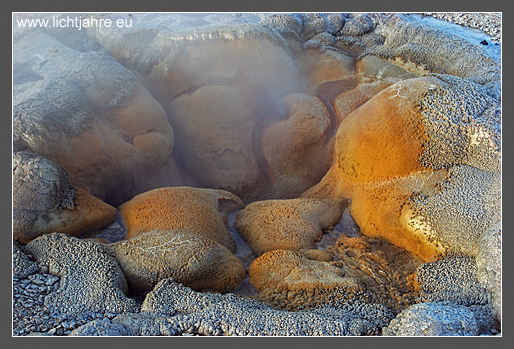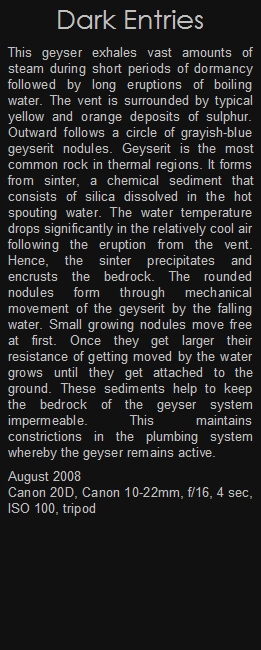

Dark Entries
This geyser exhales vast amounts of steam during short periods of dormancy followed by long eruptions of boiling water. The vent is surrounded by typical yellow and orange deposits of sulphur. Outward follows a circle of grayish-blue geyserit nodules. Geyserit is the most common rock in thermal regions. It forms from sinter, a chemical sediment that consists of silica dissolved in the hot spouting water. The water temperature drops significantly in the relatively cool air following the eruption from the vent. Hence, the sinter precipitates and encrusts the bedrock. The rounded nodules form through mechanical movement of the geyserit by the falling water. Small growing nodules move free at first. Once they get larger their resistance of getting moved by the water grows until they get attached to the ground. These sediments help to keep the bedrock of the geyser system impermeable. This maintains constrictions in the plumbing system whereby the geyser remains active.
August 2008
Canon 20D, Canon 10-22mm, f/16, 4 sec, ISO 100, tripod




















